In the lab the volunteers continue to work with artifacts from On-A-Slant Village (32MO26), a Mandan earthlodge village site located at what is now Fort Abraham Lincoln State Park. Recently, volunteer Diana came upon this large grooved maul while rebagging artifacts.
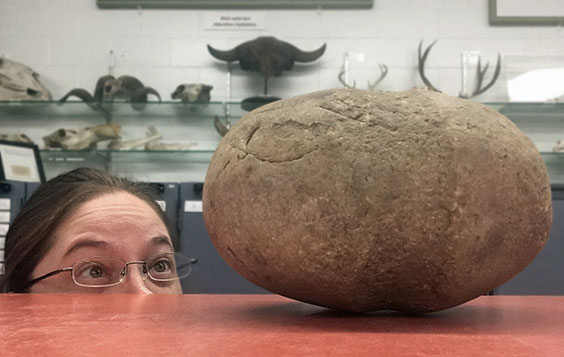
The largest grooved maul that I have seen (so far) in the North Dakota archaeology collections. SHSND AHP 83.442.71.1
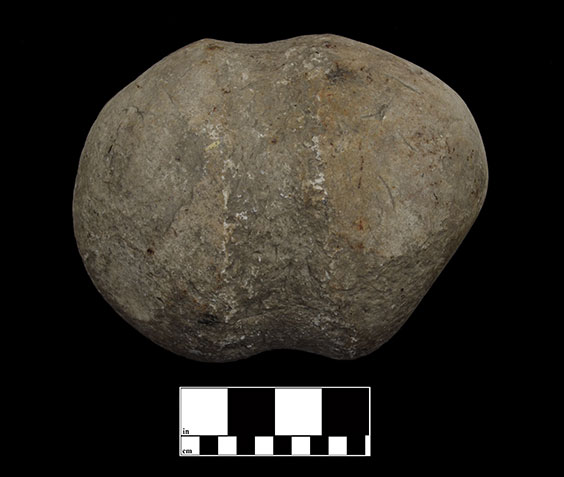
Another view of the massive grooved maul from On-A-Slant Village (32MO26). SHSND AHP 83.442.71.1
Grooved mauls were so widely used in the past that they are often found throughout what is now North Dakota. They have been discovered by archaeologists in contexts belonging to every period of the state’s history. These tools are heavy-duty hammers. They can potentially be utilized for a variety of purposes—from cracking large bison bones to extracting marrow for cooking broth or making pemmican to driving posts or stakes into the ground.
The diameter of this specific maul is visibly bigger than most grooved mauls—the volunteers in the lab and I were all surprised when we saw it. The circumference of the central groove is 18 inches (45.72 cm), and it is even wider on either side of the groove. Despite its circumference, it isn’t too long at 7 7/8 inches (about 20 cm). But it is quite heavy and weighs 14.5 pounds (6.6 kg).
Grooved mauls do come in quite a variety of sizes. But we are not exactly sure why this one is so hefty. For comparison, a still large but more usual-sized example also from On-A-Slant Village (second from right in the photo below) weighs 6 pounds (2.8 kg).
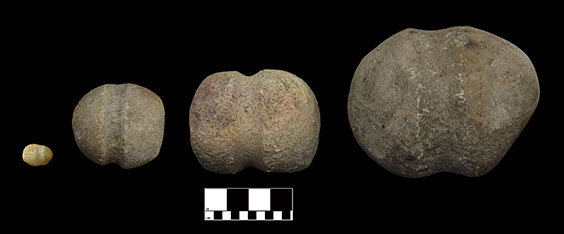
Here are examples of grooved maul sizes ranging from unusually small (far left) to the extraordinarily large maul discussed in this blog (far right). The two mauls in the center are more typical sizes. SHSND AHP 10168, 83.442.71.11, 83.442.71.9, 83.442.71.1
Mauls are made by grinding or pecking a groove around an ovoid stone. The groove near the center is typically used for attaching the maul to a handle.
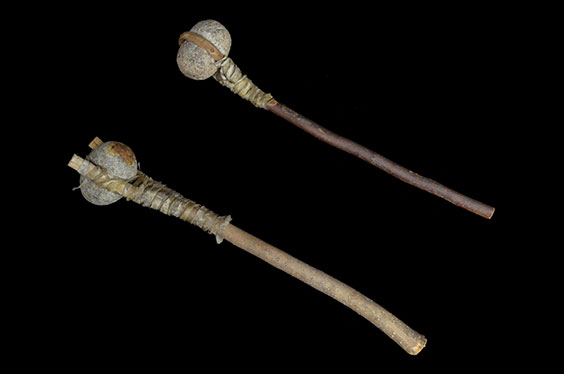
Two different examples of replica grooved mauls attached to handles. SHSND AHP Educational Collection
So far, this huge grooved maul has not been analyzed. And we don’t know exactly how it was used—although wielding it would be quite a workout! However, it almost certainly was used by someone since one end is slightly battered and worn.
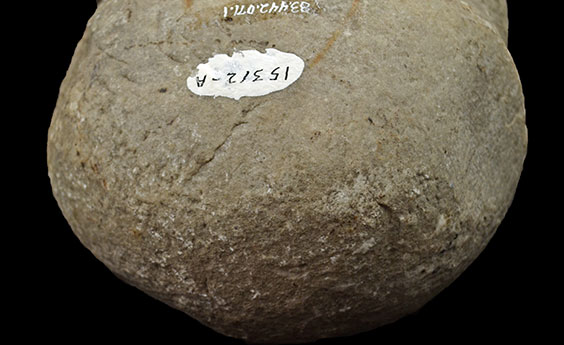
A close-up of the end of the maul showing evidence of use—this end is battered and appears to be pocked. SHSND AHP 83.442.71.1

